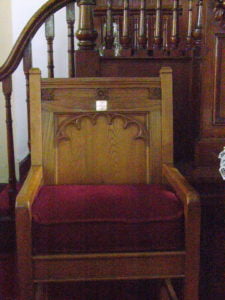Thomas Jones was, according to the 1881 census, born in Rhyl in about 1879. That census, records his mother Mary Jones as a widow and head of the house hold. She was 37 years and a domestic servant. Thomas is shown as the youngest of four children, William 14, Mary 12 and Elizabeth 7. The family were living at 36 Vale Road, Rhyl.
By the time of the 1891 census William and Mary had left the family home, which is now recorded as 16 Morfa Bach, Rhyl [off Vale Road, Rhyl]. Thomas aged 12 is recorded as a scholar. It would seem from that census, that the two children only spoke Welsh.
On the 1901 census, Thomas is described as; “Soldier – Horse Artillery”. He is now reported to be able to speak Welsh & English. The family home is given as, 4 Victoria Road, Rhyl.
On the 25th March 1916, aged 35 years 11 months, he enlisted at Wrexham in the Royal Welch Fusiliers. On his Enrolment Form [Ancestry], some previous military service is indicated; “R.E 6 training”, his former occupation is recorded as “brickyard labourer”. He was married with three children, living at 5 Tynewydd Terrace, Rhyl, which was adjacent to a brickworks, on land which has now been built over. Rhyl used to have quite a thriving Brick making industry, the last vestige of the Industry was demolished in 1978.
At the time Thomas was reported “missing in action” the 2nd Battalion Royal Welch Fusiliers were engaged in the “Third Battle of Ypres {Passchendaele} 3rd July 1917 – 6 November 1917”, [firstworldwar.com]
Thomas’ widow, had to wait until June 1918, before it was agreed that he was dead, and she became eligible for a pension of 29shillings 7pence. [Rhuddlan in Peace & War 1911 – 1922]
His wife Matilda Ann and the children were still living at 5 Tynewydd Terrace, when she signed a declaration on 13th September 1919 on Army Form W5080 [Ancestry]. That declaration confirmed her status as widow of Thomas Jones and gave details of his children.
In October 1916 the British Government set up a committee regarding the idea for a commemorative memorial plaque that could be given to the relatives of men and women whose deaths were attributable to the Great War of 1914-1918.
The relative named as the “next of kin” in a serviceman’s Service Record was sent a form to complete as a statement to confirm all the living next of kin of that serviceman and the person to whom the plaque and scroll should be sent. [Army Form W5080 was that form] {www.greatwar.co.uk/memorials/memorial-plaque.htm}
She subsequently remarried. Her Civil marriage to John David Jones, is registered at St Asaph during the March quarter 1924. [NorthWalesBMD]
Confusingly, his Flintshire War Memorial Record Card at Hawarden, indicates that he was serving in the 98th Light Railway Company as Private 290047 at the time of his death. However his inscription on Tyne Cot Memorial records him as 39844, 2nd Battalion RWF.
Thomas is commemorated on the Rhuddlan War Memorial, St Mary’s Church Roll of Honour & Window, the Royal British Legion Roll of Honour [in the Community Centre] the Memorial Chair in Ebenezer Chapel and the North Wales Memorial Arch at Bangor.
I am indebted to Sarah Hodnett of Rhuddlan Local History Society for her assistance in compiling this record.
